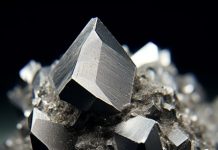The first element of Group 16 of the periodic table, oxygen is the element on which our very existence on earth depends. Humans and almost all life forms on earth need it for every breath they take and for producing energy through the combustion of food within their body. Moreover, it’s the presence of oxygen in our atmosphere that sets our planet apart from all the others in our solar system.
Oxygen is the most abundant element on the earth, accounting for around 21% of the volume of its atmosphere, around 50% of the mass of its crust, and nine tenths of the mass of water. Besides, oxygen dissolved in oceans and other water bodies enables fish and marine life to breathe. It also constitutes two thirds of the mass of the human body.
A chemically reactive, non-metallic element, oxygen forms compounds with almost all chemical elements except the noble gases. It is so highly reactive, it’s amazing that we have free oxygen available in the atmosphere for breathing. But, what’s even more amazing is that most of us take this availability for granted and fail to realise or remember how this is made possible.
The fact is, the process of photosynthesis is responsible for almost all the free, breathable oxygen gas in our atmosphere. Half of the available oxygen is produced by photosynthetic organisms in water, the other half by plants and trees on land. All of these life forms use sunlight to convert inorganic compounds like carbon dioxide and water into carbohydrate molecules inside which they store chemical energy, and oxygen molecules which they release into the air. Thus, the oxygen we breathe is mainly a by-product of photosynthesis. Meaning, as long as we ensure we have enough trees and plants, we can ensure the replenishment of atmospheric oxygen.
How oxygen was discovered
The composition of air was somewhat of a mystery till around 250 years ago. Before that, for more than two millennia, it was believed that air was one of the five basic elements, the other four being earth, water, fire, and ether. It may seem somewhat naïve now, but air was formerly considered to be a single element. The process of burning, and the reactions involved, were also not clearly understood then, mainly because of the lack of proper laboratory equipment in those days for collecting air samples and examining them.
The Italian painter-scientist Leonardo da Vinci (1452-1519) is believed to be the first to suggest that air consists of at least two different gases, one of which was consumed during burning.
Then, in 1771, the radical, free-thinking, British theologian-scientist Joseph Priestley, intrigued by how a burning candle placed in an airtight jar was extinguished after sometime and how a mouse died within a few minutes of being placed inside one, began conducting a series of experiments to understand why this happened. Discovering that a half-dead mouse inside a sealed jar could be revived by introducing a sprig of mint inside the jar, and exposing the jar to sunlight, he concluded that plants seemed to release some refreshing gas. He even wrote to his friend, the American scientist Benjamin Franklin, saying he wished what he discovered would stop people from felling too many trees. Priestly also noticed that placing a green plant inside a closed jar for some days and then burning a candle inside it let the candle burn longer. With these experiments, Priestley became the first scientist to discover that plants release into the air a gas that animals need for breathing. We now call this process photosynthesis. But, Priestley was yet to identify his mystery gas as oxygen.
He only isolated it on 1 August, 1774 when he heated mercuric oxide and found that the gas it emitted could reignite a glowing ember, make a flame burn more intensely, and keep a mouse alive four times longer than a similar quantity of air. When he reported his findings, he said the mouse “was taken out quite vigorous”. He tried breathing the gas himself and discovered it did make him feel refreshed. By now he had decided to call his discovery “dephlogisticated air”. In those days, scientists believed that combustible substances released something called phlogiston when they were burned, and that the burning stopped when the surrounding air was saturated with phlogiston.
Three years earlier, in 1771, the Swedish apothecary Carl Wilhelm Scheele had independently isolated the same gas as Priestley and named it “fire air”, noticing that it produced sparks on coming into contact with charcoal dust. But, he published his findings only in 1777. By then, Priestley had already carried out several experiments on his discovery and published the results, also declaring that “air is not an elementary substance, but a composition,” of a mix of gases.
When Priestley discussed the properties of the new gas with the French chemist Lavoisier in 1775, the latter realised he had found just what he was looking for to disprove the phlogiston theory. He realised that combustion does not result in the release of ‘phlogiston’ but in a chemical reaction between the combustible substance and Priestley’s gas. He repeated Priestley’s experiments and recognised the gas as a new element. The name Lavoisier gave it – oxygen, was derived from the Greek words ‘oxy genes’ meaning ‘acid forming’ as he believed this element was an essential component for all acids.
The name Lavoisier gave it – oxygen, was derived from the Greek words ‘oxy genes’ meaning ‘acid forming’ as he believed this element was an essential component for all acids.
Importance and uses of oxygen
Vital for good health: Of the hundreds of tasks oxygen performs in our body, the three main ones include energy production, purification of blood, and detoxification. Deficiency of oxygen can result in fatigue and body weakness, and also in a slowing down of the detoxification processes that in turn could lead to various sicknesses including metabolic disorders and cancer. Maintaining the right proportion of oxygen in the atmosphere is even more important today considering the higher levels of air pollution, modern lifestyles characterised by lack of exercise, and an increase in the consumption of refined foods.
Use in healthcare: Oxygen compressed in cylinders is supplied to patients in emergency rooms and in the ICU, and used for treating people having respiratory problems such as asthma and COPD. It is also essential for mountain climbers, underwater divers, and astronauts. Besides, oxygen gas is used to destroy gangrene-causing bacteria and for treating carbon monoxide poisoning.
Provides protection from harmful sunrays: Oxygen forms a protective ozone layer in the stratosphere that absorbs hazardous UV rays from the sun and prevents them from harming life forms and ecosystems on the earth.
Industrial uses: Around half the commercially produced oxygen is consumed by the steel industry. The rest is used for manufacturing products such as nitric acid, sulphuric acid, pharmaceuticals, other chemicals, glass, and ceramics, and also for petroleum processing, metal refining and fabrication processes, cutting and welding of metals, effluent treatment, pulp and paper bleaching, combustion of fuels in automobiles, and the burning of fuel in spacecrafts.
Priestley’s prediction coming true?
Referring to his experience of taking large whiffs of the oxygen he had isolated, Priestley had said, “I fancied that my breast felt peculiarly light and easy for some time afterwards. Who can tell but that, in time, this pure air may become a fashionable article in luxury?”
It looks like he has been proved right today. In present times, athletes are known to breathe in oxygen for a while to restore their energy levels. What’s more, oxygen bars have been opened in Japan, the US, South America, and other places, where people pay for breathing pure oxygen to reduce stress and feel refreshed and energised. And with an increasing number of such bars popping up across the world nowadays, one wonders if this is just a fad or a serious cause for worry.
References
- Mark H. Thiemens: Oxygen Origins – Nature Chemistry, 4, 66 (2012)
- John E. Heffner: The Story of Oxygen – Respiratory Care, January 2013, 58 (1) 18-31
- American Chemical Society International Historic Chemical Landmarks: Joseph Priestley and the Discovery of Oxygen. http://www.acs.org/content/acs/en/education/whatischemistry/landmarks/josephpriestleyoxygen.html
- Dr. Doug Steward: Oxygen Element Facts – https://www.chemicool.com/elements/oxygen.html
- Dr. Doug Steward: Composition of Air – How Air’s Composition was Discovered https://www.chemicool.com/elements/composition-of-air.html
- American Museum of Natural History: An Ode to O – https://www.amnh.org/explore/science-bulletins/earth/documentaries/the-rise-of-oxygen/article-an-ode-to-o
- Royal Society of Chemistry: Oxygen – Uses and Properties – http://www.rsc.org/periodic-table/element/8/oxygen
- WebElements: Oxygen: The Essentials – https://www.webelements.com/oxygen/
































